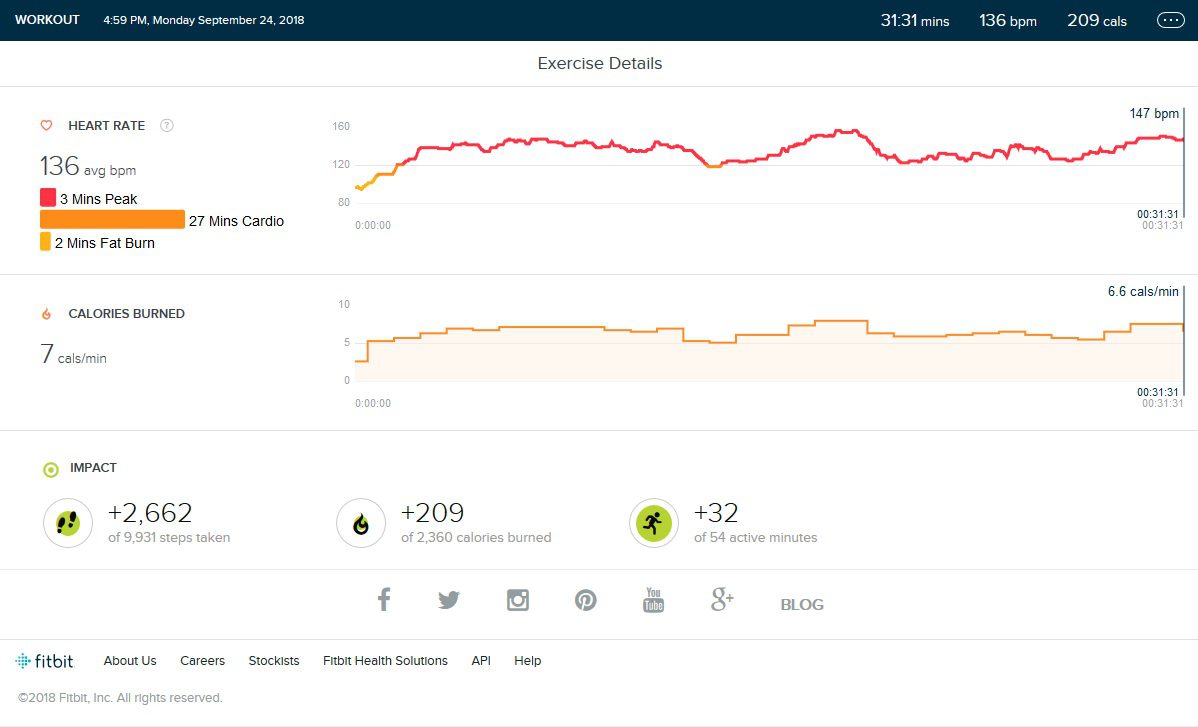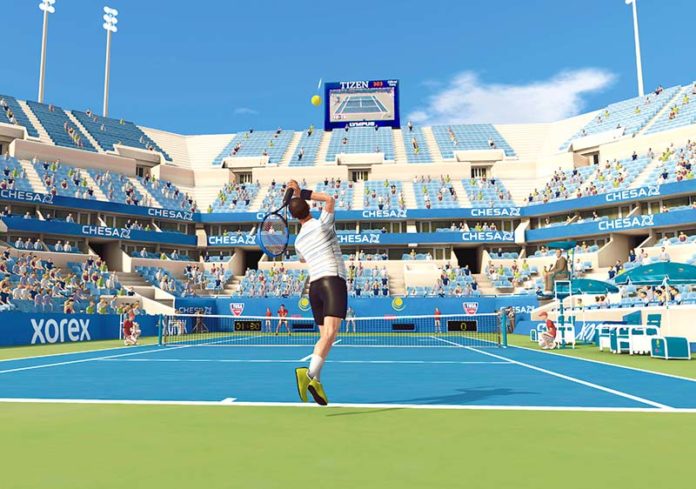Real tennis is a physical sport. Overhead serves, scrambling from baseline to net, lunging for balls just out of reach, with matches that can last for hours, tennis can be a rather grueling affair. Mikori Games have done an excellent job translating this to the virtual world with their simulator First Person Tennis!
I reviewed Eleven Table Tennis earlier this year whilst Richard Bashara looked at Racket Fury. We enjoyed both these games, highlighting their natural fit for virtual reality as table play is perfectly suited for a small home user play space. Recreating a full sized tennis court in your living room, however, is a more ambitious challenge. Read on to see how these devs nailed it!
Game Overview
Currently, an early access title, the game consists of a comprehensive single-player campaign, with multiplayer coming shortly. You play in a variety of tournaments including the Grand Slams, and all possible playing surfaces are here, grass, clay, indoor and more, all with realistic ball physics. Initially ranked 50th in the world, your aim is to become world number one. You can customize your character, selecting face and body types, rackets, shirt colors etc. There’s no female selection as yet, which seems an omission but I expect that might come in time.
There are two primary game modes, arcade, and simulation. Simulation mode realistically replicates the ball physics, which means for the uncoordinated like myself, it’s frustratingly hard. Arcade mode assists you in keeping the ball on the court allowing you to just thwack your shots at full pelt. I ended up sticking to this as it was a lot more fun, but for those wanting to really go deep into the game, the simulation mode will offer plenty of added depth.
Movement Options
The biggest challenge in trying to recreate a full-size tennis court is how to handle in-game movement. This isn’t an easy problem to overcome but the developer has gone the extra mile in providing every conceivable method of movement so you can choose what works for you. Let’s outline them here;
Arm Swinging – Much like Sprint Vector you swing your arms to move. Having to use those same arms to also hit the ball I found this unplayable but it will certainly increase your fitness output!
Free Movement – Here you push the thumb-pad on the left touch controller to move. This will cause nausea for some people but the iron-stomached will appreciate it.
Automatic Movement – The camera moves automatically. Might still cause nausea for some but less complicated than manual movement as the computer automatically handles positioning for you so you can just concentrate on hitting the ball.
Teleport – Here you are simply teleported to the area of the court where the ball is headed. You can also press in either thumb-stick to teleport to and from the net. I actually found this mode perfect for me. No nausea, no worrying about positioning, and it resulted in a really playable experience.
Preparation
I play-tested this game for 30 minutes using my Fitbit Charge 2. I had already warmed up beforehand with a practice match so my heart was a little elevated. During play, I bounced on my toes and played as actively as possible. I was interested to see if this game was a better workout than Eleven. To that end, I’ve posted the Fitbit results of both games for direct comparison.

First Person Tennis Simulator
- Calories Burned: 209
- Average Heart Rate: 136
- Max Heart Rate: 147
- Steps: 2662
- Active Minutes: 32
Eleven Table Tennis (For my full review of this game click here)
- Calories Burned: 166
- Average Heart Rate: 115
- Max Heart Rate: 135
- Steps: 2481
- Active Minutes: 29
As you can see this game got my heart rate up a lot further!
Intensity 7/10
This game is clearly a better workout than table tennis in VR. There are a couple reasons for this. Firstly, overhand serves! You will need a high ceiling to avoid mishap but you can really smash those balls down the court in arcade mode, and getting aces is very satisfying. Secondly, when returning you naturally want to place your entire body in front of the ball and really power those returns from the baseline. Finally, if you have space you can move around the court physically far more than you can play table tennis. I have a large play-space with cable extensions for my headset and I could run forward to anticipate some shots early, or also run back if I was at the net and got lobbed. Be careful in your play-space though. Some games have caused me to punch walls, this is the first game in which I’ve run full speed into one!
Arms 7/10
Your serving/tennis arm will get a good workout in this game. Unlike table tennis, you can really hit the ball hard and those serves will work your shoulder too. If you choose arm swinging for on the court movement you can add a couple more points to this. Obviously, your non-racquet arm isn’t worked as much though.
Legs 7/10
This really comes down to your play-space size and movement style. If you have the room to run around this game can get really quite physical, if you’re confined to a smaller space it will obviously be a more static experience. I have a large area and this game rewarded that by allowing me to move more than in any other fitness game I’ve played so far.
Core and Balance 6/10
Although your core isn’t trained directly your abs should get a decent workout from the coiling/uncoiling motion in hitting your groundstrokes. The service motion in tennis, when performed correctly, will work all the critical muscle groups, including your core. I found this handy article outlining how serves in tennis can help strengthen your core. It also provides a few core strengthening exercises you can perform at home to get the perfect core stability for tennis. Although I didn’t get to try it as I was using an Oculus Rift, the game has full Vive tracker support allowing you to use a real tennis racket, thus very closely approximating the core workout you’d get serving in real life!
Time Perception 9/10
Matches can be intense and lengthy if competitive. The atmosphere is great with crowd applause and even some match commentary so you really get drawn into the competition. During my 30 minute play-test, I played just one opponent, coming back from 2 sets down to win 3-2 and I loved every second of it!
Replayability 9/10
With 13 tournaments, 7 court surfaces and a ranking system the single player mode will take you a while to get through. There are both arcade and simulation modes, plus beginner and advanced difficulties. One way I check to see if a game has longevity is to check out Steam reviews and see how many people have put serious hours into the game. With this title, I found a small core of players with over 100 hours played, which suggests to me that for real tennis fans, there is a very high-quality simulation here and that it’s well worth the investment of your money and time.
Fitness Scalability 7/10
You’ll never reach Thrill of the Fight level intensity in this game but the various play-styles and game modes certainly allow for a range of experiences, from relaxing serve practice, easy friendly matches, to gritty games against a tough AI opponent. If you have a Vive tracker, adding a real tennis racket will certainly up the ante and make it closer to life experience.
Lack of Nausea 9/10
If movement in VR makes you nauseous teleport will eliminate the problem entirely, whilst for those with a stronger stomach free movement is an option.
Social Competition – 1/10
Online multiplayer is on its way. I reached out to the developer and he told me that December is the target deadline. This should really enhance the longevity of the title. Currently, though it’s a solo player game only.
VRFI Fit Score 6.8/10
Mikori games have succeeded in bringing a fun and rewarding tennis experience to virtual reality. The increased movement, overhand serves, and harder shot strokes make this game a better choice for virtual fitness than table tennis, as demonstrated by my Fitbit stats.
The Good
- A deep simulation mode for serious tennis fans will provide lasting interest, whilst the arcade mode is instantly playable for those just looking to pick up and play
- If you have a large play-space this game really comes into its own, allowing for much more movement compared to table tennis
- Although I couldn’t playtest the feature personally, full Vive tracker support allowing for use of real tennis rackets in the game is a great feature for true tennis enthusiasts. Just watch out for your ceiling light!
The Bad
- Requires a LOT of room, not just play-space area but ceiling height as well!
- Multiplayer is touted as coming, but not here yet.
First Person Tennis Simulator is available on Oculus Home and Steam for Rift, Vive and Mixed Reality headsets. It is priced at $24.99 or £18.99.


